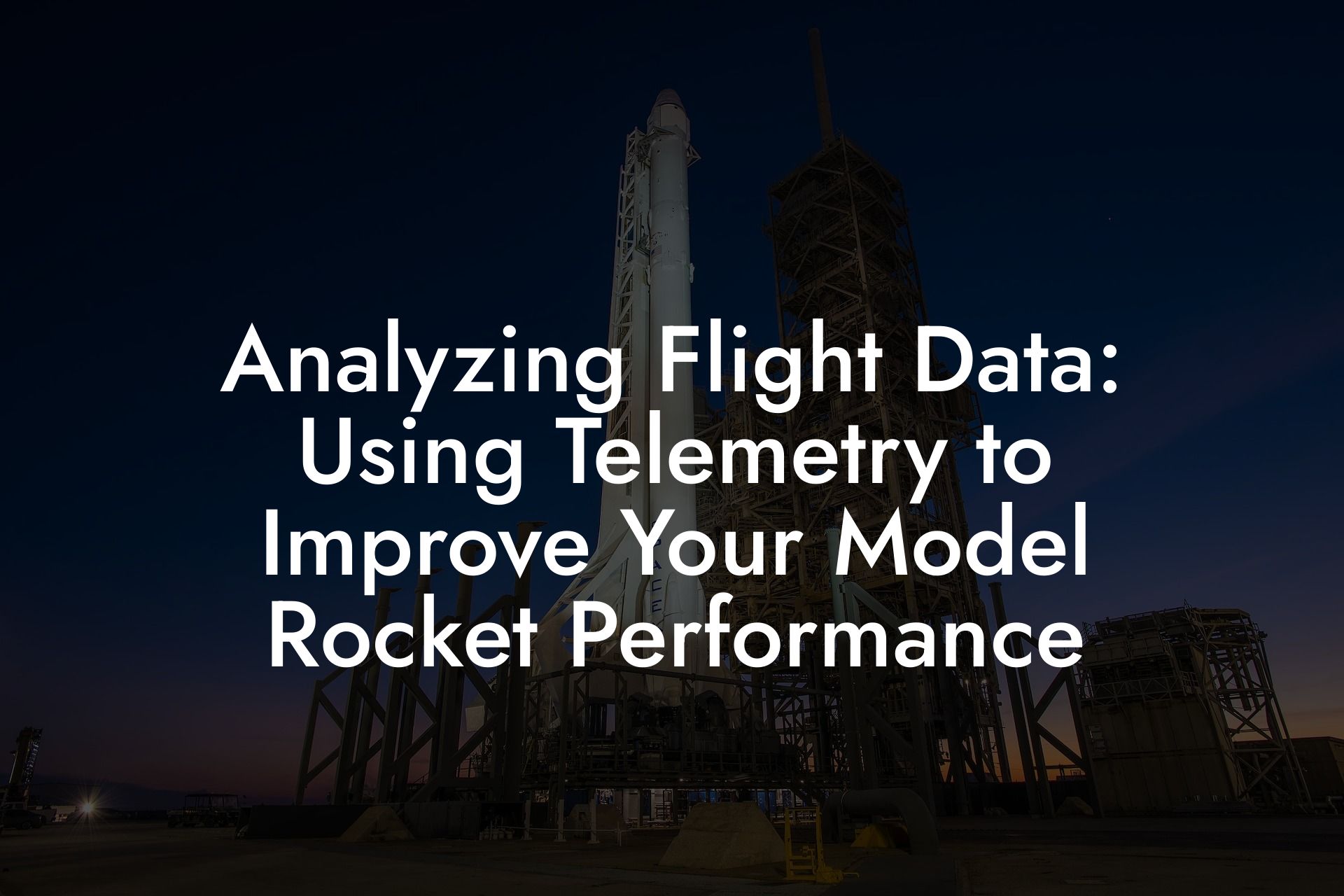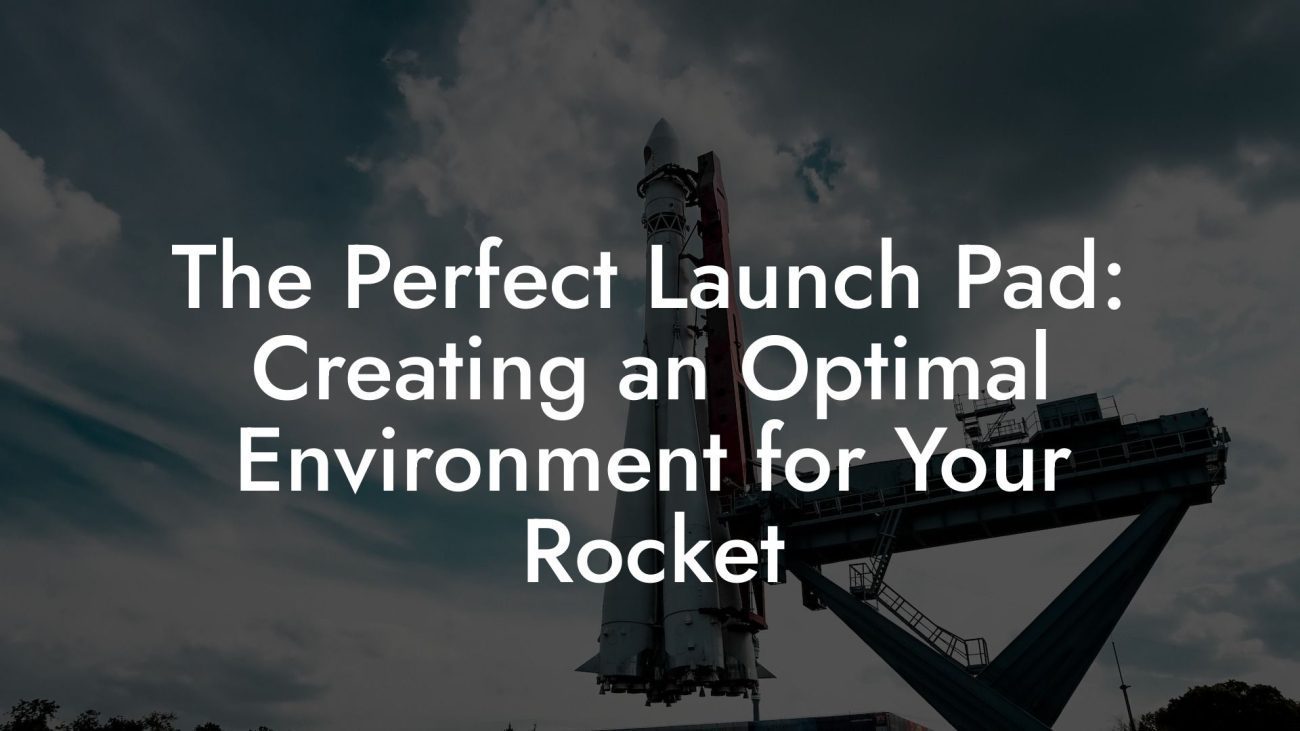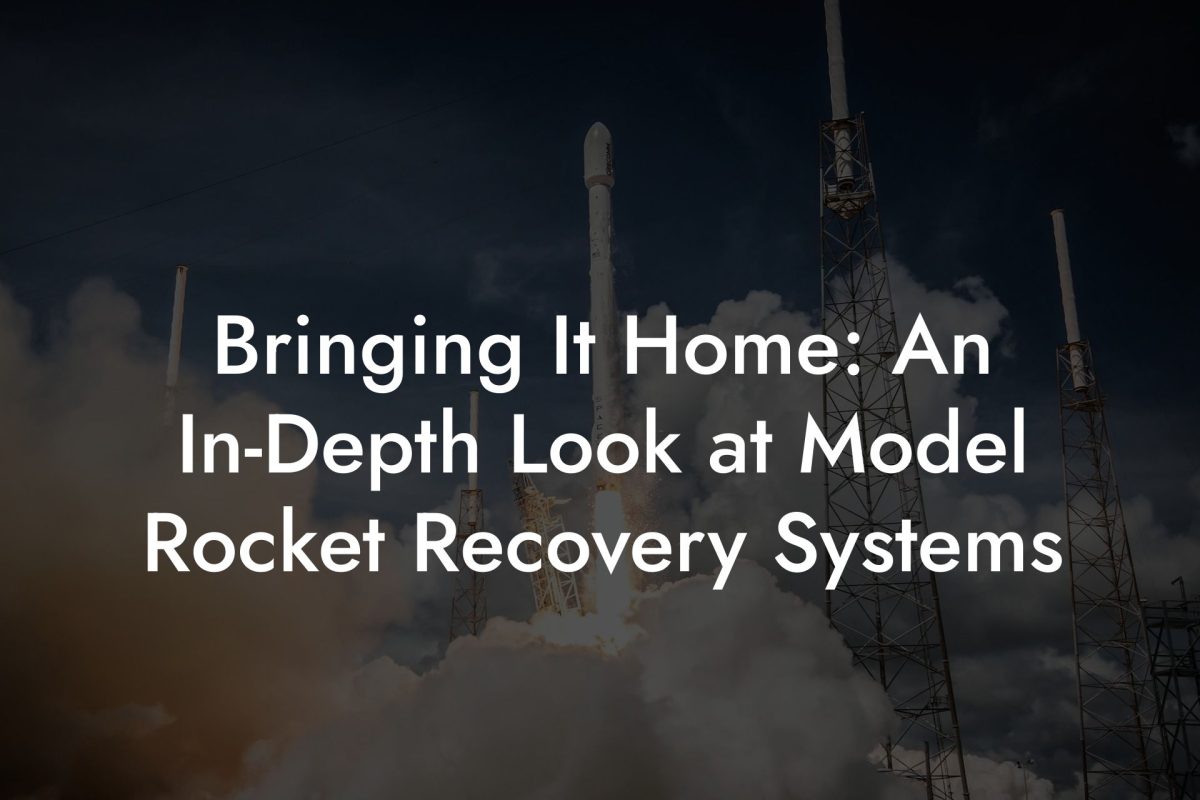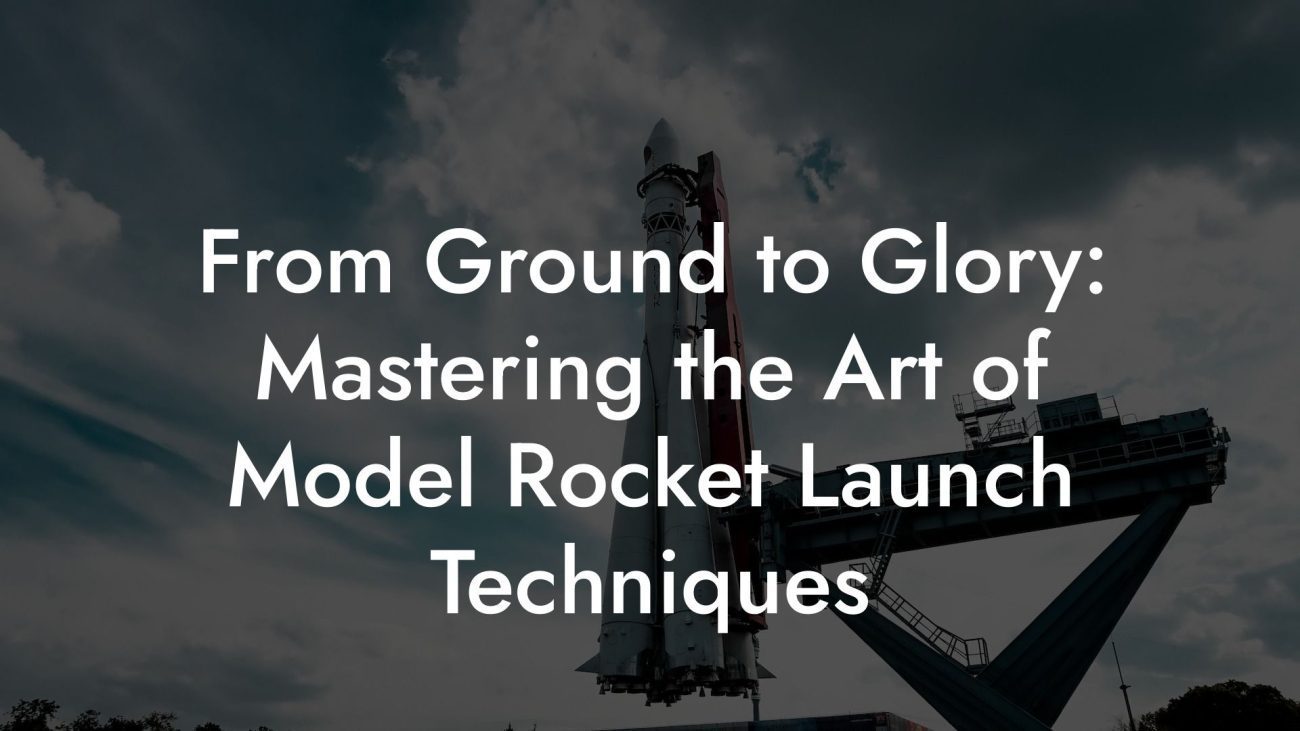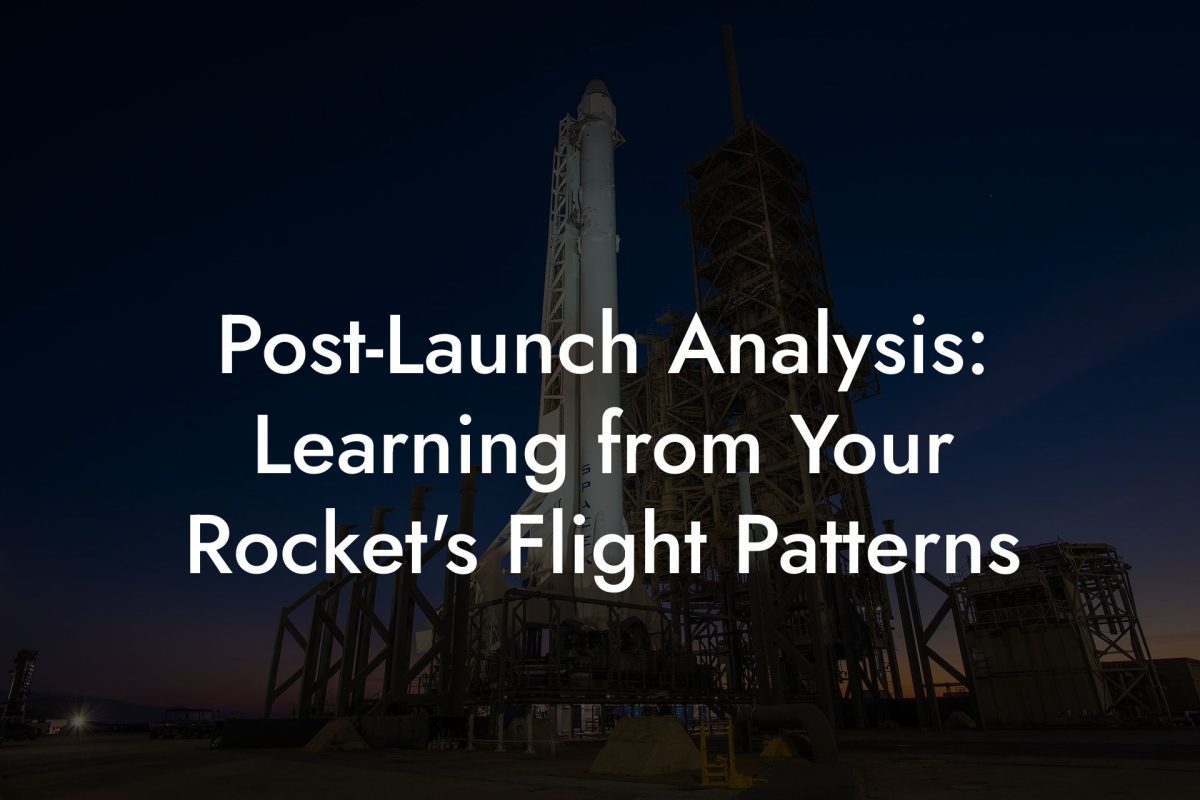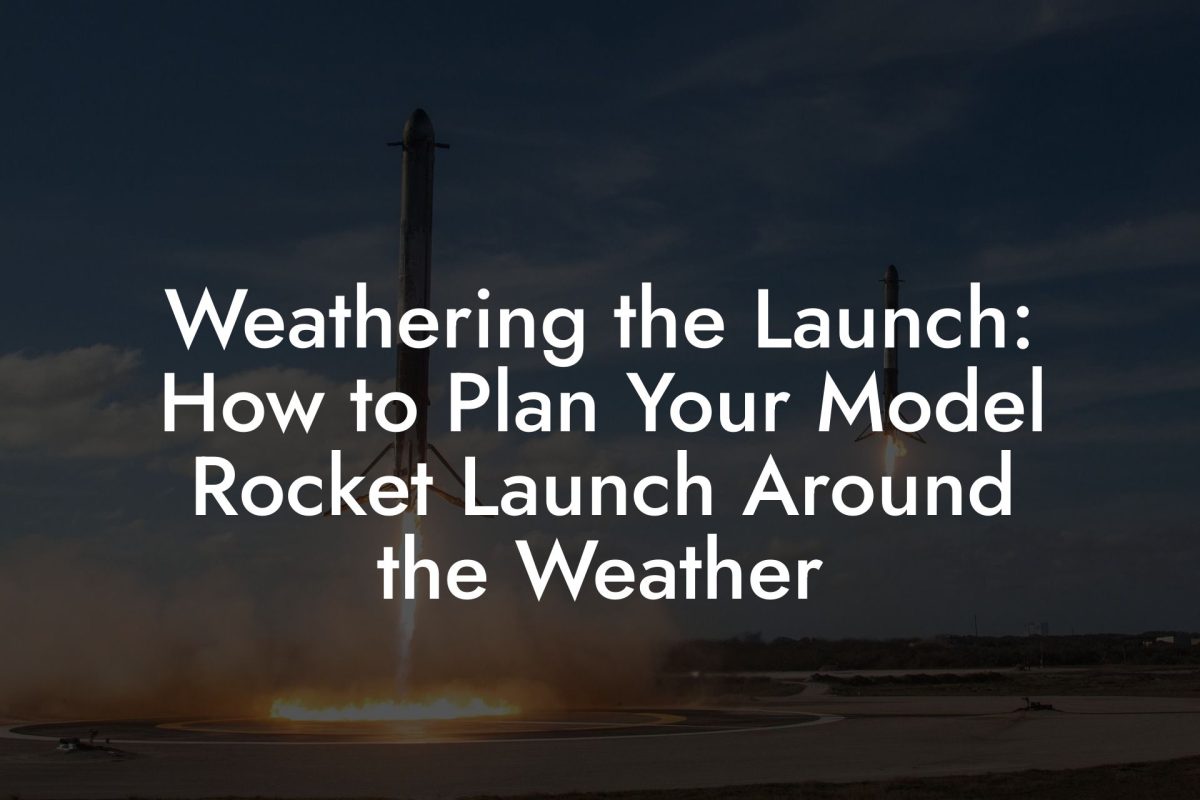Every successful rocket launch is more than just a brilliant burst of liftoff, it’s a data-rich journey that tells the story of your rocket’s performance from the ground to the edge of space. "Analyzing Flight Data: Using Telemetry to Improve Your Model Rocket Performance" is your comprehensive guide to harnessing the power of real-time data. Whether you’re a beginner eager to learn or a seasoned rocketeer looking to fine-tune your design, this guide will show you how to capture, analyze, and apply flight data to take your model rocketry to new heights.
Quick Links to Useful Sections
- Introduction: The Value of Flight Data
- Telemetry Basics: What Is It and Why It Matters
- Essential Telemetry Tools for Model Rocketry
- Data Loggers and Sensors
- GPS and Radio Telemetry
- Software and Data Analysis Tools
- Collecting Flight Data: Setting Up Your Telemetry System
- 1. Installation and Calibration
- 2. Testing the System
- 3. Data Transmission Setup
- Analyzing Flight Data: Turning Numbers into Knowledge
- Data Retrieval and Visualization
- Identifying Performance Gaps
- Making Data-Driven Adjustments
- Case Studies: Learning from Flight Data Successes
- The Altitude Booster
- The Stability Enhancer
- The Efficiency Optimizer
- Advanced Techniques: Leveraging Telemetry for Future Innovations
- Real-Time Data Monitoring
- Integration with Simulation Software
- Collaborative Data Sharing
- Model Rocket Telemetry FAQs
- Your Next Launch: Analyze, Adapt, and Achieve New Heights
Introduction: The Value of Flight Data
In model rocketry, every launch is an experiment, and every flight is an opportunity to learn. Telemetry, the process of collecting and transmitting flight data, provides insights into the behavior of your rocket during flight. By analyzing parameters like altitude, speed, acceleration, and engine performance, you can pinpoint areas for improvement, optimize your design, and ensure safer, more consistent launches.
With modern digital sensors and data loggers, gathering this information has never been easier. In this guide, we’ll explore the fundamentals of telemetry, the tools required for data collection, and how to interpret and apply the data to enhance your rocket’s performance.
Telemetry Basics: What Is It and Why It Matters
Telemetry is the science of collecting data from remote or inaccessible points and transmitting it to a receiving station for monitoring and analysis. In model rocketry, telemetry systems capture vital flight parameters such as:
- Altitude: The maximum height reached by your rocket.
- Velocity and Acceleration: How fast your rocket is moving and how quickly it gains speed.
- Engine Performance: Thrust levels, burn time, and other indicators of how well your engine is functioning.
- Orientation and Stability: Data from gyroscopes and accelerometers that reveal the rocket’s flight path and stability.
By understanding these parameters, you can identify anomalies, optimize your engine’s burn, adjust the center of gravity, and refine the aerodynamic properties of your rocket.
Looking For The Best Model Rocket Kits? You'll Love These:
Essential Telemetry Tools for Model Rocketry
To start analyzing flight data, you need the right set of tools. Fortunately, a range of affordable and accessible devices are available to rocketeers:
Data Loggers and Sensors
Data loggers capture various flight parameters throughout the launch. Many modern kits integrate sensors that record altitude, speed, temperature, and acceleration. Look for models with:
- Altimeters: To measure the peak altitude achieved during flight.
- Accelerometers and Gyroscopes: For tracking acceleration and rotational movements, which help assess stability.
- Barometric Sensors: To monitor atmospheric pressure changes, which correlate with altitude.
GPS and Radio Telemetry
GPS modules provide precise location data, while radio telemetry systems allow for real-time data transmission during flight. These systems can be particularly useful for high-altitude launches or when launching in remote areas.
Software and Data Analysis Tools
Once you’ve collected the data, analysis software helps visualize and interpret it. Programs like Mission Planner, MATLAB, or even custom spreadsheets can transform raw numbers into actionable insights.
Collecting Flight Data: Setting Up Your Telemetry System
Before launching, it’s essential to integrate your telemetry system with your rocket. Follow these key steps:
1. Installation and Calibration
Mount your data logger and sensors securely inside the rocket. Ensure that all components are properly calibrated according to the manufacturer’s instructions. Calibration ensures that your sensors provide accurate readings during flight.
2. Testing the System
Before the actual launch, perform ground tests. Simulate a launch by activating the system and checking if data is correctly recorded and transmitted. A test run helps verify that all sensors are functioning as expected.
3. Data Transmission Setup
If you’re using real-time telemetry, establish a secure connection between your rocket and the ground station. Test the range and reliability of your radio or GPS transmission to ensure continuous data flow throughout the flight.
Analyzing Flight Data: Turning Numbers into Knowledge
Once your rocket has safely returned, it’s time to dive into the data. The analysis process can be broken down into several steps:
Data Retrieval and Visualization
Download the recorded data from your logger and import it into your analysis software. Visual tools, such as graphs and charts, can help you see trends and identify anomalies. Plotting altitude, velocity, and acceleration over time can reveal key performance metrics.
Identifying Performance Gaps
Compare the actual flight data against your expected performance. Look for discrepancies such as lower-than-expected thrust, premature burnout, or unstable flight patterns. These gaps can indicate issues with engine performance, aerodynamic drag, or misalignment.
Making Data-Driven Adjustments
Use the insights gained from your data analysis to refine your rocket’s design. For example, if the data shows an unexpected dip in acceleration, you might consider adjusting the fuel grain geometry or rebalancing the rocket’s weight distribution.
Iterative testing and analysis are key to continuous improvement in model rocketry.
Case Studies: Learning from Flight Data Successes
Real-world examples of data-driven improvements can inspire and guide your own efforts:
The Altitude Booster
One rocketeer used telemetry to discover that a slight misalignment in the engine mount was causing a loss of thrust. By correcting the alignment, they increased the rocket’s peak altitude by 20%.
The Stability Enhancer
Another enthusiast noticed unusual acceleration spikes that indicated unstable flight. Adjustments to the rocket’s center of gravity, based on data from gyroscopic sensors, resulted in a smoother, more stable ascent.
The Efficiency Optimizer
Through detailed analysis of burn time and thrust curves, a builder fine-tuned their fuel formulation to achieve a longer, more consistent burn, ultimately enhancing overall performance.
These case studies highlight how a careful examination of flight data can lead to significant performance gains and innovative solutions.
Advanced Techniques: Leveraging Telemetry for Future Innovations
For those ready to push the boundaries of model rocketry, advanced telemetry can offer even deeper insights:
Real-Time Data Monitoring
With real-time telemetry, you can monitor flight data as it happens, allowing for immediate adjustments and troubleshooting during the flight. This level of control can be especially beneficial for experimental launches.
Integration with Simulation Software
Use the data collected from real launches to refine your digital models. By feeding actual performance data into simulation software, you can predict how future modifications might affect your rocket’s flight characteristics.
Collaborative Data Sharing
Join online rocketry communities to share your flight data and learn from others. Collaborative analysis can uncover trends and innovative ideas that might otherwise go unnoticed.
The integration of advanced telemetry with iterative design processes paves the way for groundbreaking improvements in model rocketry.
Model Rocket Telemetry FAQs
Here are some frequently asked questions to help you navigate the world of flight data analysis and telemetry:
1. What is telemetry and why is it important in model rocketry?
Telemetry involves collecting and transmitting flight data, such as altitude, speed, and acceleration. It’s important because it provides valuable insights into your rocket’s performance and helps identify areas for improvement.
2. What types of sensors are typically used in model rocketry telemetry systems?
Common sensors include altimeters, accelerometers, gyroscopes, and barometric pressure sensors. GPS modules and radio transmitters are also used for real-time tracking.
3. How do I choose the right telemetry system for my rocket?
Consider factors such as the complexity of your rocket, the parameters you want to measure, the range of data transmission, and your budget. Research and reviews from the rocketry community can also guide your decision.
4. Can telemetry data help improve engine performance?
Yes, analyzing thrust curves, burn time, and acceleration data can reveal performance issues and guide adjustments to fuel formulations, engine alignment, and aerodynamic design.
5. How do I ensure accurate data collection?
Calibration of sensors, proper installation, and conducting test launches are essential to ensure that your telemetry system collects accurate data.
6. What software can I use to analyze flight data?
You can use programs like Mission Planner, MATLAB, or even specialized rocketry analysis software to visualize and interpret your flight data.
7. Is real-time telemetry necessary for all launches?
Not necessarily; while real-time data can provide immediate insights, many rocketeers collect data for post-flight analysis, which is also highly valuable.
8. How does integrating flight data with simulations improve future launches?
Feeding actual flight data into simulation models allows you to fine-tune your rocket’s design, predict performance changes, and make informed adjustments for future launches.
9. What are the common challenges when using telemetry systems?
Challenges include ensuring reliable data transmission, sensor calibration, and managing the additional weight of the telemetry equipment without affecting flight performance.
10. How often should I review and update my telemetry system?
Regularly review your telemetry data after each launch and update your system as needed to take advantage of technological advancements and improve accuracy.
Your Next Launch: Analyze, Adapt, and Achieve New Heights
With the power of telemetry, every launch becomes an opportunity to learn and improve. By capturing and analyzing flight data, you can unlock insights that lead to smarter designs, better engine performance, and more successful launches.
Embrace data-driven experimentation, refine your models, and let the numbers guide you to continuous improvement. The sky is not the limit, it's a launching pad for innovation. Get ready to analyze, adapt, and take your model rocketry performance to new heights!
Looking For The Best Model Rocket Kits? You'll Love These:
Useful Interruption: Dive deeper into the world of Model Rockets with our most popular sections. If there is anything you think is missing or anything you would love for us to write about, just give us a shout.
- Getting Started & Basics With Model Rockets
- Model Rocket Design, Build & Customization
- Model Rocket Propulsion & Engine Technology
- Model Rocket Launch Techniques & Recovery
- Model Rocket Advanced Rocketry & Innovations
- Model Rocket DIY and Customization
- Model Rocket Equipment Reviews & Digital Tools
- Community, Competitions & Education
- Model Rocket Troubleshooting & FAQs
- Model Rocket Bonus/Seasonal & Niche Topics
A group of model rocket enthusiasts gathered at a field for their weekly launch event. Among them was Dave, a seasoned builder known for pushing the limits of hobby rocketry. This time, he had outdone himself.
“Ladies and gentlemen,” Dave announced, dramatically pulling a cloth off his latest creation, “I present to you: The Kraken!”
The crowd gasped. This wasn’t just a model rocket, it was a monster. The thing stood 8 feet tall, had six clustered engines, and was covered in enough duct tape to qualify as a classified aerospace project.
“Dave,” muttered Steve, the cautious safety officer, “Have you, uh… done the math on this?”
“Math?” Dave scoffed. “I built it in my garage at 3 a.m. with parts from eBay. This is an art piece, Steve.”
The countdown began.
5…
4…
3…
2…
1…
The engines ignited with a BOOM, and The Kraken shot up… kind of. It immediately did a violent barrel roll, narrowly missing the spectators before skyrocketing at an angle that could only be described as “legally questionable.”
The crowd collectively ducked as The Kraken flew straight over the adjacent cornfield, where Old Man Jenkins, the grumpiest farmer in town, was minding his business.
KABOOM!
The rocket disappeared behind the barn. A moment later, a flaming piece of Estes igniter wire landed at Steve’s feet. The silence was deafening.
And then, an unmistakable sound echoed across the field.
Jenkins’ shotgun being cocked.
“DAVE!!!” Steve shouted. “RUN.”
And that was the day Dave invented the first-ever biologically powered rocket booster: pure adrenaline.
To this day, nobody knows where The Kraken landed, but legend has it, it still haunts the skies, terrifying unsuspecting drones and low-flying birds.

